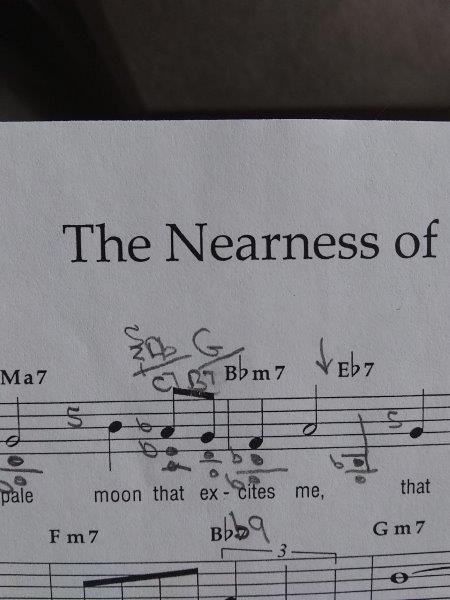A teacher I was working with several years ago, suggested I play the second bar of The Nearness of You as shown in the attachment.
I love the way it sounds and it’s always been fun.
I’ve been doing shell voicings of the C7, B7 and Bbm7 and then just taking down the right hand as shown. I would love to incorporate this in other songs, but I don’t fully understand what’s going on and why it sounds so good to me.
I emailed this to Hayden. He replied:
"C7 to B7 to Bb-7 could be viewed as a 251 cadence but the 2 chord (C-7 or C-7b5) is now dominant C7, the V7 chord would be F7, but you are using the tritone sub B7, and that will take you to Bb-7. Any dominant chord will have a strong pull either a 5th down, or a half step down. In this case we are utilising that half step motion. In your context with this tune, you are harmonising that descending melody line into Bb-7 by playing a dominant 7th chord under each melody note. These chord can be called passing chords. "
He also encouraged me to post this, so here it is.
I think I understand what he’s saying, and that’s enlightening, What I’m still wondering about is what is it about the connection between the Ab chord over C7 and the G chord over B7 that sounds so good to me?


